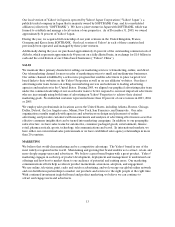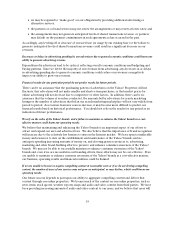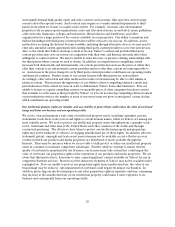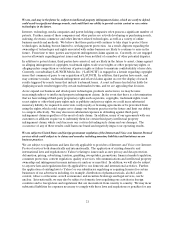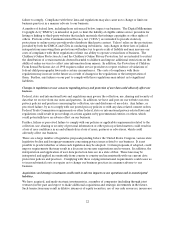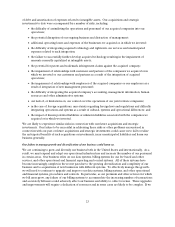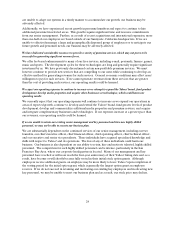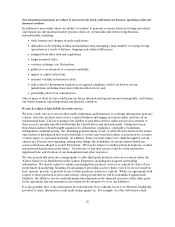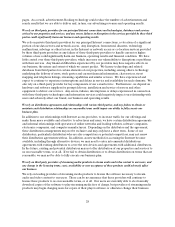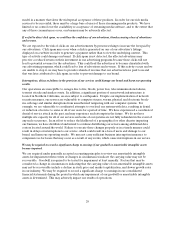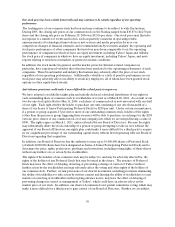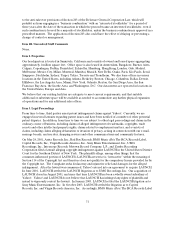Yahoo 2005 Annual Report Download - page 29
Download and view the complete annual report
Please find page 29 of the 2005 Yahoo annual report below. You can navigate through the pages in the report by either clicking on the pages listed below, or by using the keyword search tool below to find specific information within the annual report.23
of debt and amortization of expenses related to intangible assets. Our acquisitions and strategic
investments to date were accompanied by a number of risks, including:
• the difficulty of assimilating the operations and personnel of our acquired companies into our
operations;
• the potential disruption of our ongoing business and distraction of management;
• additional operating losses and expenses of the businesses we acquired or in which we invested;
• the difficulty of integrating acquired technology and rights into our services and unanticipated
expenses related to such integration;
• the failure to successfully further develop acquired technology resulting in the impairment of
amounts currently capitalized as intangible assets;
• the potential for patent and trademark infringement claims against the acquired company;
• the impairment of relationships with customers and partners of the companies we acquired or in
which we invested or our customers and partners as a result of the integration of acquired
operations;
• the impairment of relationships with employees of the acquired companies or our employees as a
result of integration of new management personnel;
• the difficulty of integrating the acquired company’s accounting, management information, human
resources and other administrative systems;
• our lack of, or limitations on, our control over the operations of our joint venture companies;
• in the case of foreign acquisitions, uncertainty regarding foreign laws and regulations and difficulty
integrating operations and systems as a result of cultural, systems and operational differences; and
• the impact of known potential liabilities or unknown liabilities associated with the companies we
acquired or in which we invested.
We are likely to experience similar risks in connection with our future acquisitions and strategic
investments. Our failure to be successful in addressing these risks or other problems encountered in
connection with our past or future acquisitions and strategic investments could cause us to fail to realize
the anticipated benefits of such acquisitions or investments, incur unanticipated liabilities and harm our
business generally.
Our failure to manage growth and diversification of our business could harm us.
We are continuing to grow and diversify our business both in the United States and internationally. As a
result, we must expand and adapt our operational infrastructure and increase the number of our personnel
in certain areas. Our business relies on our data systems, billing systems for our fee based and other
services, and other operational and financial reporting and control systems. All of these systems have
become increasingly complex in the recent past due to the growing diversification and complexity of our
business and to acquisitions of new businesses with different systems. To effectively manage this growth,
we will need to continue to upgrade and improve our data systems, billing systems, and other operational
and financial systems, procedures and controls. In particular, as our premium and other services for which
we bill users grow, any failure of our billing systems to accommodate the increasing number of transactions
and accurately bill users could adversely affect our business and ability to collect revenue. These upgrades
and improvements will require a dedication of resources and in some cases are likely to be complex. If we


